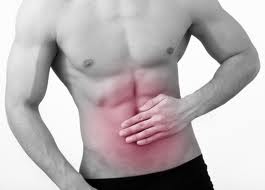Ulcers can occur either in the stomach (gastric ulcer) or in the small intestines (peptic ulcer). Although gastric ulcers can bleed, peptic ulcers have a greater possibility of becoming bleeding ulcers. Getting an ulcer is not a pretty thing or an easy issue to deal with. With all the stresses that happen everyday, an ulcer could really be acquired by anyone. According to studies, males are more likely to develop ulcers than females. This is probably because they carry the burden of earning for the family. They also get involved in more physical endeavors than the women. Once you are afflicted with ulcers, then you are bound to a life of pain and discomfort. Symptoms of a ulcer are anemia, fatigue, nausea, abdominal pain, and vomiting. If it becomes a bleeding peptic ulcer, there will be blood in your stools as well.
Bleeding ulcers are exacerbated ulcers in the stomach or small intestines. When you are diagnosed with a bleeding ulcer, it is mandatory for you to switch to a bleeding ulcer diet. This diet switch will enable you to acquire your needed nutrients even if you have bleeding ulcers. Here are some of the facts that you need to know about the bleeding ulcer diet:
1. Prevents aggravation
 When you are diagnosed with a bleeding ulcer, your bleeding ulcer diet will help you get that good nutrition that you need in managing your condition. This designed diet helps your stomach lessen the amount of acid present there. The bleeding ulcer diet also neutralizes the acid in the stomach. Lesser acid production lessens the probability of irritating or further corroding the ulcers present in the digestive system, particularly in the stomach.
When you are diagnosed with a bleeding ulcer, your bleeding ulcer diet will help you get that good nutrition that you need in managing your condition. This designed diet helps your stomach lessen the amount of acid present there. The bleeding ulcer diet also neutralizes the acid in the stomach. Lesser acid production lessens the probability of irritating or further corroding the ulcers present in the digestive system, particularly in the stomach.
2. Modifies diet
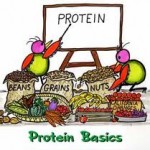 Those suffering from bleeding ulcers are very undernourished because they tend to eat less or none at all because of the pain that they experience. The bleeding ulcer diet provides the energy that the patient needs to recover from and manage the condition. Amino acids in the food that you eat will help in producing more protein that will help in the proper healing of the tissues. In the bleeding ulcer diet, there is a protein content increase of about fifty percent. With regard to milk, there should be caution on this food item because there can be negative effects given to the healing ulcers. Meat also tends to stimulate the stomach too much so you have to find other protein sources aside from this.
Those suffering from bleeding ulcers are very undernourished because they tend to eat less or none at all because of the pain that they experience. The bleeding ulcer diet provides the energy that the patient needs to recover from and manage the condition. Amino acids in the food that you eat will help in producing more protein that will help in the proper healing of the tissues. In the bleeding ulcer diet, there is a protein content increase of about fifty percent. With regard to milk, there should be caution on this food item because there can be negative effects given to the healing ulcers. Meat also tends to stimulate the stomach too much so you have to find other protein sources aside from this.
3. Fat is good, fiber bad
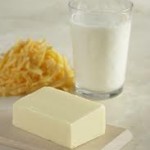 In the bleeding ulcer diet, fat is very important. This is to lubricate the food that enters the digestive system, to minimize the irritation caused by the food as it touches the ulcerated walls or the stomach or intestines, and to protect the walls of the stomach and intestine as well. Butter and cream should be increased in the diet. Fiber is a no-no when you have a bleeding ulcer. It could be very coarse and harsh, which may very well irritate the digestive system.
In the bleeding ulcer diet, fat is very important. This is to lubricate the food that enters the digestive system, to minimize the irritation caused by the food as it touches the ulcerated walls or the stomach or intestines, and to protect the walls of the stomach and intestine as well. Butter and cream should be increased in the diet. Fiber is a no-no when you have a bleeding ulcer. It could be very coarse and harsh, which may very well irritate the digestive system.
4. Vitamin C-rich
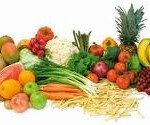 Vitamin C or ascorbic acid is very important because of the antioxidant properties that it provides. It makes the tissues stronger and heals the damage tissues much faster. You could either increase your intake of citrus fruits, vitamin C-rich vegetables, or have it as a supplement everyday.
Vitamin C or ascorbic acid is very important because of the antioxidant properties that it provides. It makes the tissues stronger and heals the damage tissues much faster. You could either increase your intake of citrus fruits, vitamin C-rich vegetables, or have it as a supplement everyday.
5. Vitamin K-rich
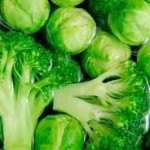 With vitamin K (that combines with calcium) in the bleeding ulcer diet, platelets are produced. Platelets make the clotting of wounds faster. When this happens, bleeding is greatly reduced. You could get your daily allowance of vitamin K are kale, spinach, broccoli, lettuce, canola, parsley, and Swiss chard.
With vitamin K (that combines with calcium) in the bleeding ulcer diet, platelets are produced. Platelets make the clotting of wounds faster. When this happens, bleeding is greatly reduced. You could get your daily allowance of vitamin K are kale, spinach, broccoli, lettuce, canola, parsley, and Swiss chard.
6. Vitamin E-rich
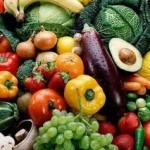 Vitamin E is a potent antioxidant that helps maintain the good health of your skin. It decreases the formation of the acids in your stomach that could irritate or aggravate the ulcers present in your GIT. It could also reduce the pains or the cramps in your stomach. You could get your daily allowance of vitamin E from eggs, almonds, olives, sweet potatoes, flax seeds, kelp, and brown rice.
Vitamin E is a potent antioxidant that helps maintain the good health of your skin. It decreases the formation of the acids in your stomach that could irritate or aggravate the ulcers present in your GIT. It could also reduce the pains or the cramps in your stomach. You could get your daily allowance of vitamin E from eggs, almonds, olives, sweet potatoes, flax seeds, kelp, and brown rice.
7. Vitamin A-rich
 Alongside vitamin E and vitamin C, vitamin A is also a very effective antioxidant that protects your gastric and intestinal lining. This facilitates the healing of your ulcers. It also protects against the erosion of the mucous membranes brought about by the stomach acids. This vitamin also repair the damaged tissues. Beta carotene is the precursor of vitamin A so you could eat yellow squash, broccoli, asparagus, carrots, mustard greens, and spinach. Direct vitamin A could be found in fish liver and beef.
Alongside vitamin E and vitamin C, vitamin A is also a very effective antioxidant that protects your gastric and intestinal lining. This facilitates the healing of your ulcers. It also protects against the erosion of the mucous membranes brought about by the stomach acids. This vitamin also repair the damaged tissues. Beta carotene is the precursor of vitamin A so you could eat yellow squash, broccoli, asparagus, carrots, mustard greens, and spinach. Direct vitamin A could be found in fish liver and beef.
8. Garlic-y
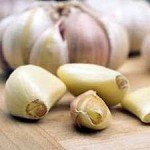 With the allicin and ajoene in garlic that are natural antibiotics, this is a perfect add-on to the bleeding ulcer diet. With garlic, you could just easily get rid of Heliobacter pylori, which in the causative agent of ulcers.
With the allicin and ajoene in garlic that are natural antibiotics, this is a perfect add-on to the bleeding ulcer diet. With garlic, you could just easily get rid of Heliobacter pylori, which in the causative agent of ulcers.
Make sure that you work with your doctor for any changes that should be made to your diet. The bleeding ulcer diet is not for everyone so your doctor must see to it that your bleeding ulcer diet is fir for your personal dietary needs.
